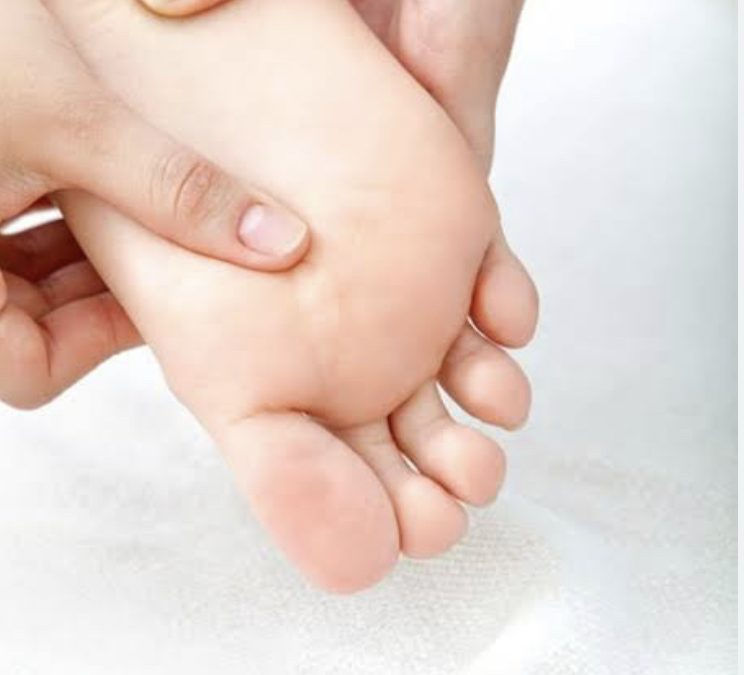What Causes Ball Of The Foot Pain?
- Dr. Angela Walk

- Jun 25, 2025
- 3 min read
Updated: Jul 5, 2025

Do you feel pain at the ball of your foot when walking, running, or standing? You’re not alone.
Pain under the forefoot is one of the most common complaints I hear in practice, and it can stem from a variety of conditions—all with different causes and treatment approaches.
In this post, I’ll break down the most common types of ball of foot pain, their hallmark symptoms, and how you can start healing naturally—without orthotics, injections, or unnecessary surgery.
What Is the “Ball of the Foot”?
The ball of the foot refers to the padded area beneath the metatarsal heads—just behind your toes.
This area absorbs shock with every step and bears a significant portion of your body weight.
When the structures here are overloaded, compressed, or misaligned, pain and dysfunction can follow.
Common Conditions That Cause Ball of Foot Pain
Here are the top forefoot conditions I treat most often, along with natural, evidence-informed approaches to managing them.
1. Metatarsalgia
Pain under the central metatarsal heads, often described as burning, aching, or feeling like “walking on a pebble.”
Causes:
Overuse or excessive loading
Elevated heels in footwear
Weak intrinsic foot muscles
Collapsed transverse arch
Natural Treatment:
Foot-shaped, zero-drop footwear
Metatarsal pads to redistribute pressure
Intrinsic foot strengthening
2. Morton’s Neuroma
Enlarged or inflamed nerve, usually between the 3rd and 4th toes, causing numbness, tingling, or electric-like pain.
Causes:
Narrow, compressive footwear
Toe spring and heel elevation
Nerve compression from poor toe alignment
Natural Treatment:
Footwear that is widest at the toes
Toe spacers to decompress the nerve
Metatarsal pads for splay
Nerve-gliding mobility work
3. Sesamoiditis
Pain under the big toe joint, often localized beneath the 1st metatarsal due to inflamed sesamoid bones.
Causes:
Improper big toe alignment
Overuse (especially in dancers, runners)
Tight, tapered shoes or toe spring
Natural Treatment:
Toe spacers to realign the big toe
Flat, flexible footwear to reduce pressure
Big toe mobility and metatarsal offloading
4. Capsulitis (of the 2nd Toe)
Inflammation of the ligament capsule under the 2nd toe joint, causing pain, swelling, and instability.
Causes:
Excessive loading of 2nd metatarsal
Poor foot biomechanics
Toe deformities or collapsed arch
Natural Treatment:
Metatarsal offloading
Strengthening of foot and lower leg
Realignment with toe spacers
Transition to flat footwear
5. Fat Pad Atrophy
Loss of the natural cushioning under the metatarsal heads, often due to aging or long-term shoe use.
Causes:
Overuse
High-impact sports
Footwear with inadequate cushioning
Natural Treatment:
Forefoot pads to mimic lost cushioning
Foot strengthening
Ground-friendly, soft-soled footwear
Comparison Table: Types of Ball of Foot Pain
Condition | Location | Key Symptoms | Natural Interventions |
Metatarsalgia | Center of forefoot | Aching, burning, "pebble under foot" | Foot-shaped shoes, met pads, toe spacers, strengthening |
Morton’s Neuroma | Between 3rd & 4th toes | Numbness, tingling, electric pain | Toe spacers, zero-drop shoes, neural gliding, metatarsal pads |
Sesamoiditis | Beneath big toe joint | Sharp pain under big toe, limited toe motion | Toe spacers, natural footwear, offloading, joint mobility |
Capsulitis | Under 2nd toe joint | Pinpoint pain, swelling, instability | Met pads, strengthening, footwear change |
Fat Pad Atrophy | Under metatarsal heads | Tenderness, lack of cushioning | Soft padding, barefoot-style shoes, reduced impact activities |
What’s Causing All This Foot Pain?
One of the primary drivers behind nearly all of these forefoot issues is modern footwear.
Heel elevation (even in athletic shoes) places excess pressure on the ball of the foot—like standing on a ramp all day.
Toe spring keeps the toes lifted unnaturally, stressing the forefoot with every step.
Tapered toe boxes squeeze and misalign your toes, reducing circulation and impairing natural function.
Natural Treatment Plan: Restore Balance & Function
1. Transition to Functional Footwear
Wear shoes that are:
Flat (zero-drop)
Widest at the toes
Flexible in the sole
These encourage natural toe splay, allow proper gait mechanics, and reduce abnormal forefoot pressure.
2. Use Toe Spacers
Toe spacers restore alignment of the toes and metatarsal heads, creating space for nerves and tissues to move freely.
Wear daily (barefoot or in wide shoes)
Combine with foot activation exercises
3. Strengthen the Intrinsic Foot Muscles
Weak foot muscles = less stability and more pressure in the wrong places.
Start with these exercises:
Short Foot Exercise
Toe Spreading & Lifting
Single-Leg Balance with Toe Splay
Barefoot walking indoors with toe spacers
4. Offload with Metatarsal Pads or Cushions
In the early stages of healing, metatarsal pads can help by:
Redistributing pressure away from pain sites
Encouraging natural forefoot spread
Final Thoughts From Dr. Angela
The ball of the foot is designed to be strong, stable, and adaptable—but only if we give it the right environment.
By ditching modern shoes, restoring alignment, and building strength, you can reverse most forefoot pain naturally.
Let your feet function as nature intended—and healing will follow.
Best of Foot Health,
Dr. Angela

➡️ Work With Me







Comments